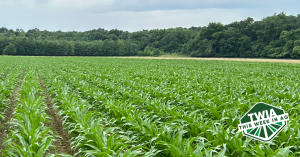Webinar video highlights key findings—including $6M in savings—from a year-long bioremediation program for lagoon sludge reduction at a municipal wastewater treatment plant.
In this 31-minute video, Heather Jennings, PE, Director of Probiotic Solutions®, and Diego Lopez, Chief Plant Operator for the City of Lemoore, Calif., Wastewater Treatment Plant discuss highlights from the year-long study of a bioremediation program (using Bio Energizer®) for lagoon sludge reduction at a municipal wastewater treatment plant.
In the study, the operators of a municipal wastewater treatment facility with 4 lagoons had determined that their 2 primary lagoons—10-foot-deep, with 25-million-gallon holding capacity each—had reached sludge depths of 5–7 feet, putting the lagoons at risk of upset and seriously impacting the facility’s wastewater processing capacity.
A bioremediation plan was implemented that included the use of a biostimulant to support microbial reduction of the organic solids in the system. Sludge judging was performed for the 2 primary lagoons at baseline and at quarterly intervals over a one-year period to measure the impact of the bioremediation plan on sludge reduction.
The results of ATP and DNA analyses pointed out the often-misunderstood fact that wastewater treatment facility lagoon sludge is not inert: it is the most biologically active layer of the water column and can be efficiently controlled and reduced through proper bioremediation interventions
At the end of the one-year bioremediation plan, sludge depth for the 2 lagoons had been reduced by an average of 45%, with sludge depth at some sample points completely reduced to zero. This represented 17,800 dry tons of sludge that did not need to be mechanically removed and hauled to a disposal location, a potential savings to the treatment facility of over $6 million.
To read the full report in the Lagoons: Under the Surface white paper, CLICK HERE.
Related Posts

BHN’s R&D Director Honored With Two 40-Under-40 Awards
Rita Abi-Ghanem, PhD, Senior Director of Research and Development at Bio Huma Netics, Inc. (BHN), has recently been selected for two 40-Under-40 awards. The first, from The Phoenix Business Journal, recognizes Arizona leaders under the age of 40 who are making major strides in their careers and are having a positive impact on their communities.

This Week in Ag #68
How many kernel rows, or rounds, will an ear of corn have? That’s being determined right now in my cornfield. My corn has hit the critical V6 growth stage (in just 31 days, no less). Next to emergence and pollination, V6 is one of the most significant times of the plant’s life. This is when the

This Week in Ag #53
“They’re not making any more of it” has long been a popular response among farmers justifying a land purchase (or in the case of retirees or heirs, for holding on to it). But now it seems, they’re making less of it. A lot less. Like 20 million acres less. That’s about the size of Maine.

